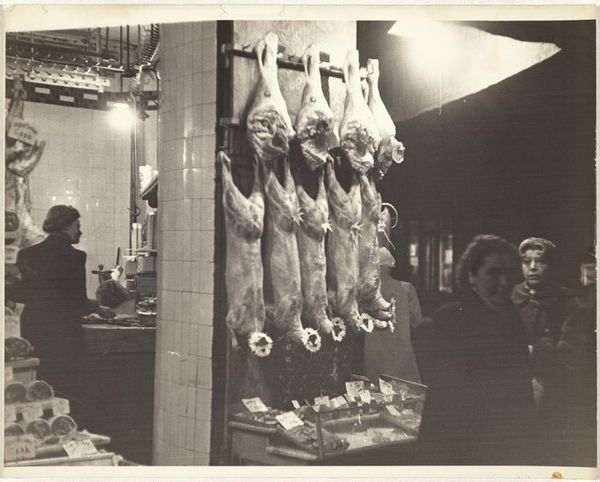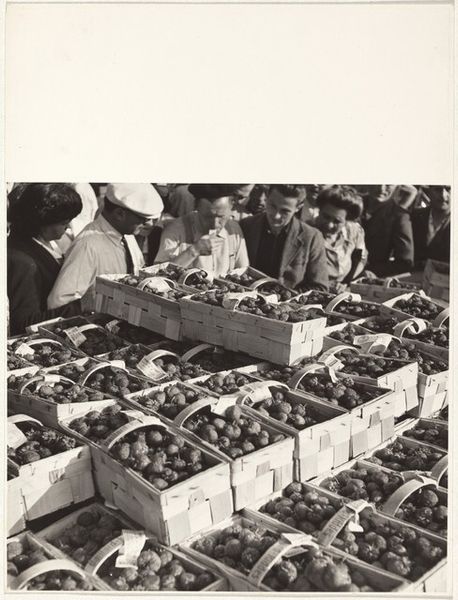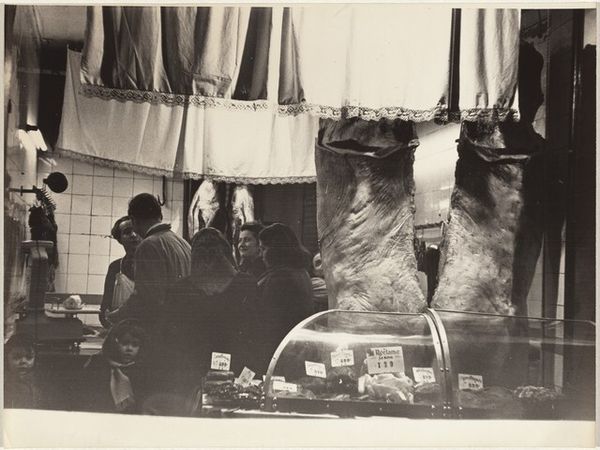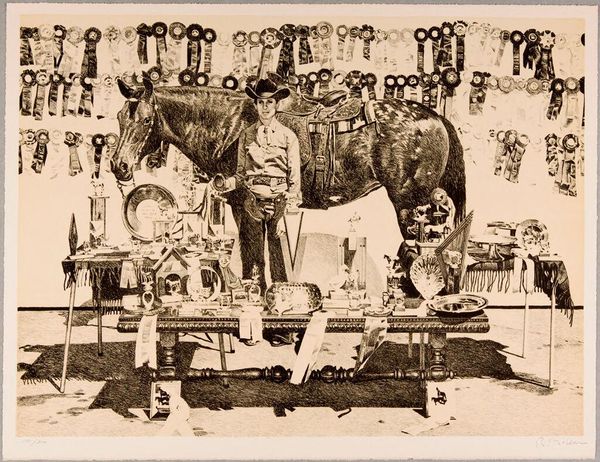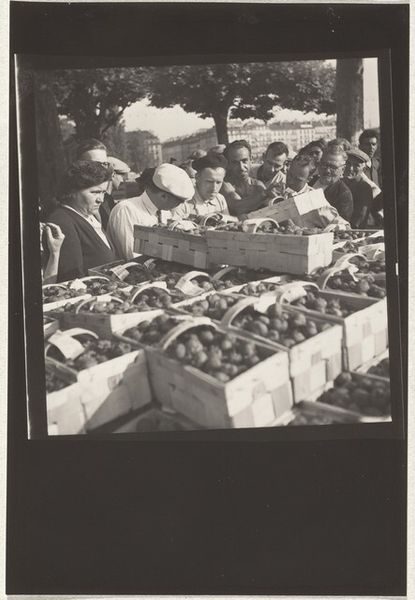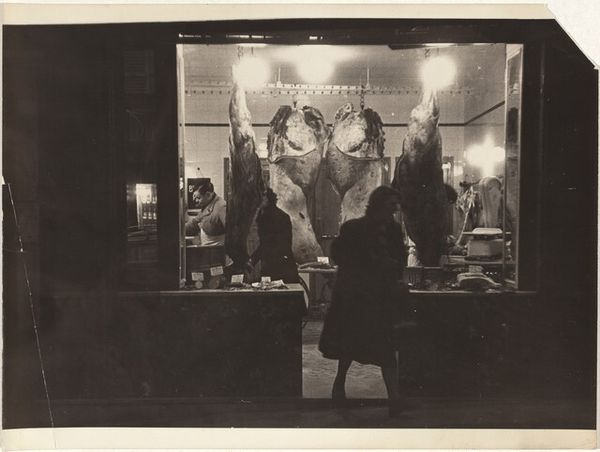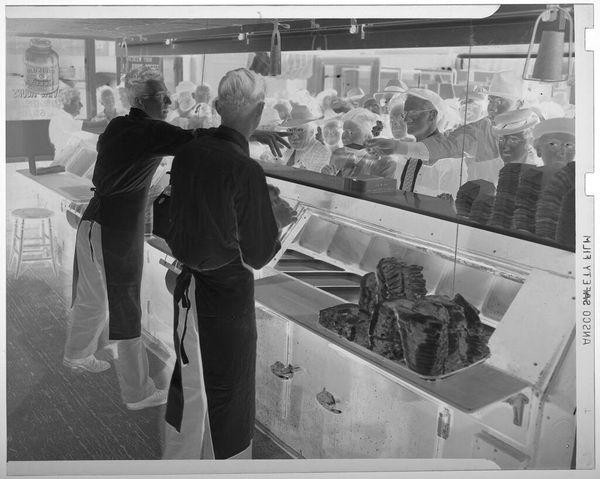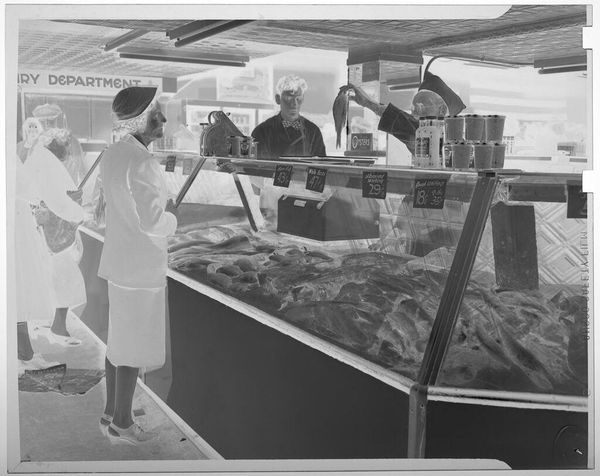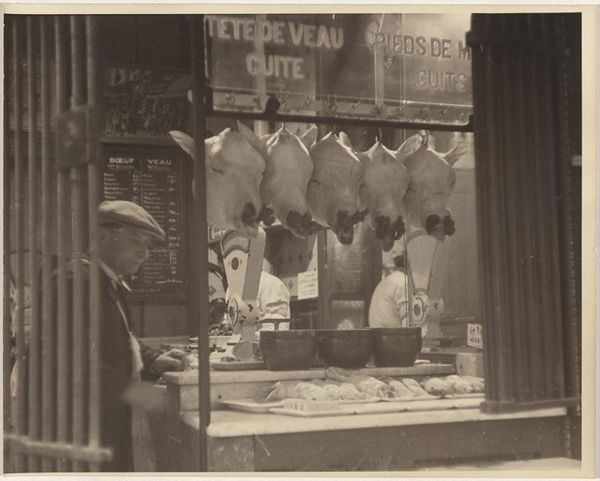
print, photography, gelatin-silver-print
#
portrait
# print
#
street-photography
#
photography
#
gelatin-silver-print
#
genre-painting
#
realism
Dimensions: sheet (trimmed to image): 5.8 x 5.5 cm (2 5/16 x 2 3/16 in.)
Copyright: National Gallery of Art: CC0 1.0
Editor: We are looking at "Market--People," a gelatin silver print photograph by Robert Frank, created between 1941 and 1945. The arrangement of objects in the photograph is chaotic but also, somehow, captures the lively atmosphere of a busy marketplace. How do you interpret this work through a formalist lens? Curator: What strikes me immediately is the tonal range. Frank's use of greyscale is masterful. Note how the subtle variations in shade create depth and dimension despite the compression inherent in photography. The composition itself is densely packed, reflecting the subject matter. Does the artist favor a particular point of view? Editor: Not that I can see, though the high vantage point gives us a bird's-eye perspective of the people and objects. How does that perspective influence the overall structure? Curator: Precisely! The elevated perspective flattens the scene, emphasizing the graphic elements. Observe how the horizontal lines formed by the tent top and the vendor's table intersect with the vertical figures, creating a complex interplay of planes. Moreover, consider how the differing textures—the smooth faces against the rough-hewn merchandise— contribute to a dialectic, do you agree? Editor: I do! The juxtaposition highlights the contrast between the human element and the manufactured goods. Did Frank intend this, or am I reading too much into it? Curator: Intent is ultimately unknowable. But we can see that he made careful choices about lighting and contrast to give particular objects greater visual weight than others, contributing to the work's overall balance. Notice, also, the shallow depth of field. How might this be interpreted from a formalist stance? Editor: I see. By keeping most of the image slightly out of focus, it draws attention to the shapes and forms rather than individual details. I now understand better how we can analyze a photograph like this, not for *what* it depicts, but how *it* is composed. Curator: Exactly. By examining elements such as tone, texture, and compositional arrangement, one discovers much about the formal attributes of the art.
Comments
No comments
Be the first to comment and join the conversation on the ultimate creative platform.
